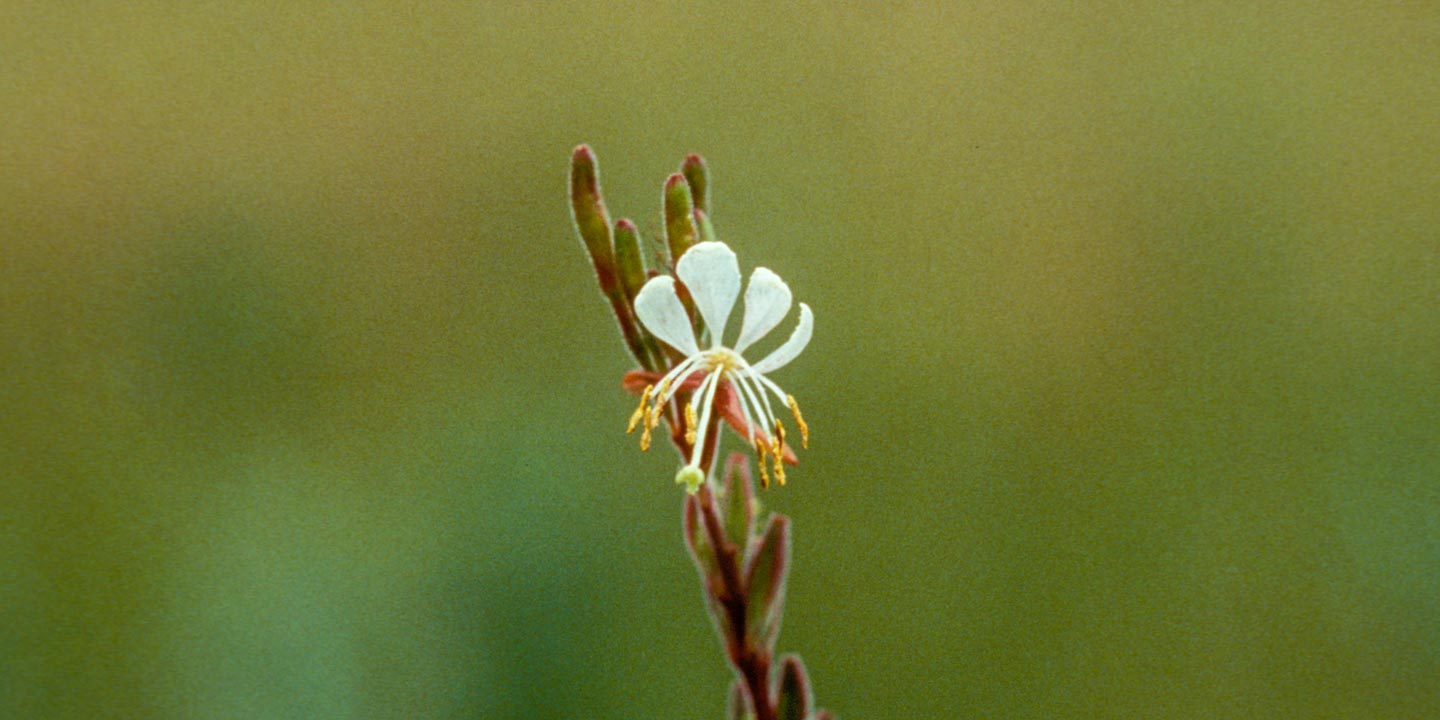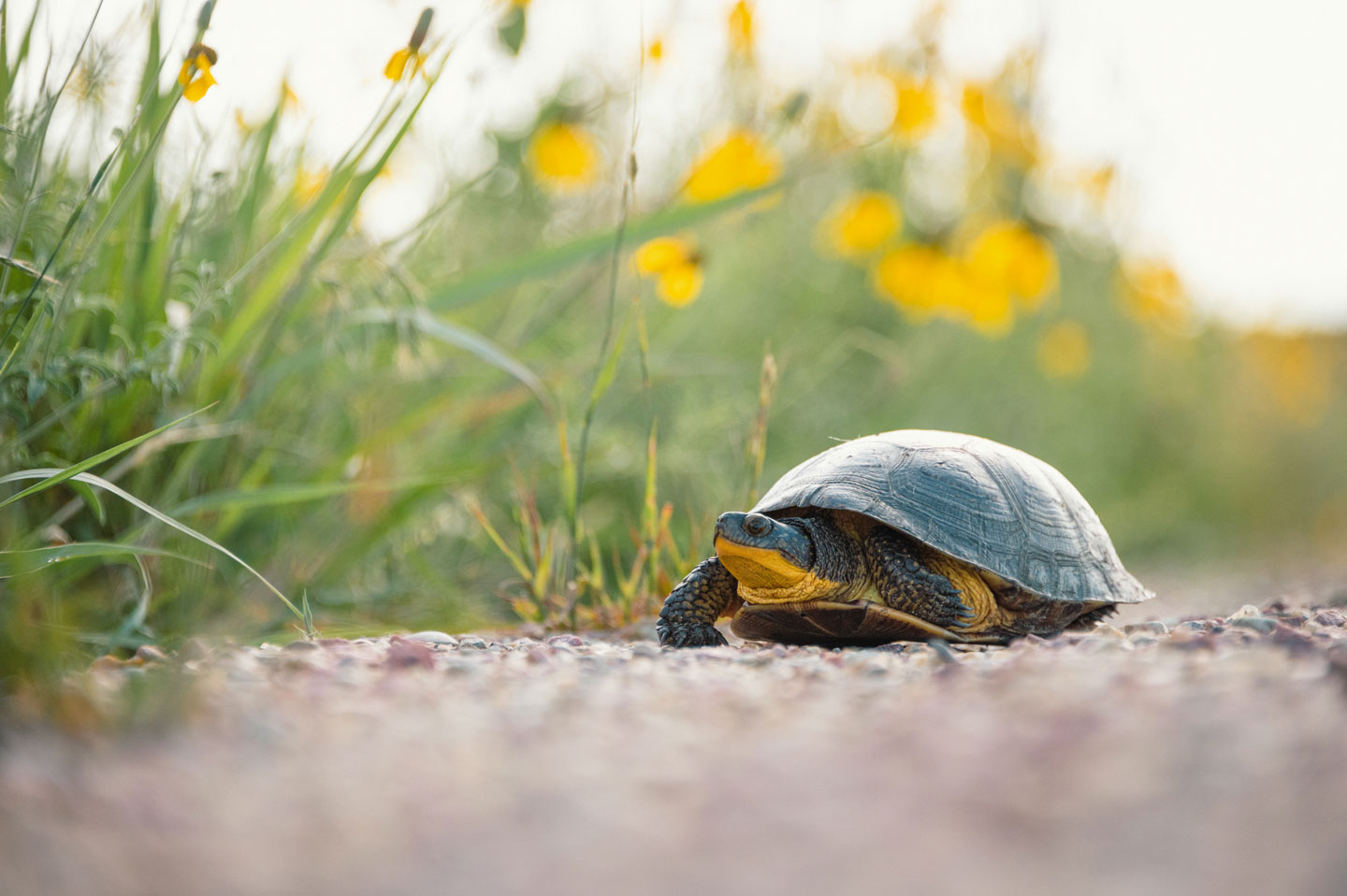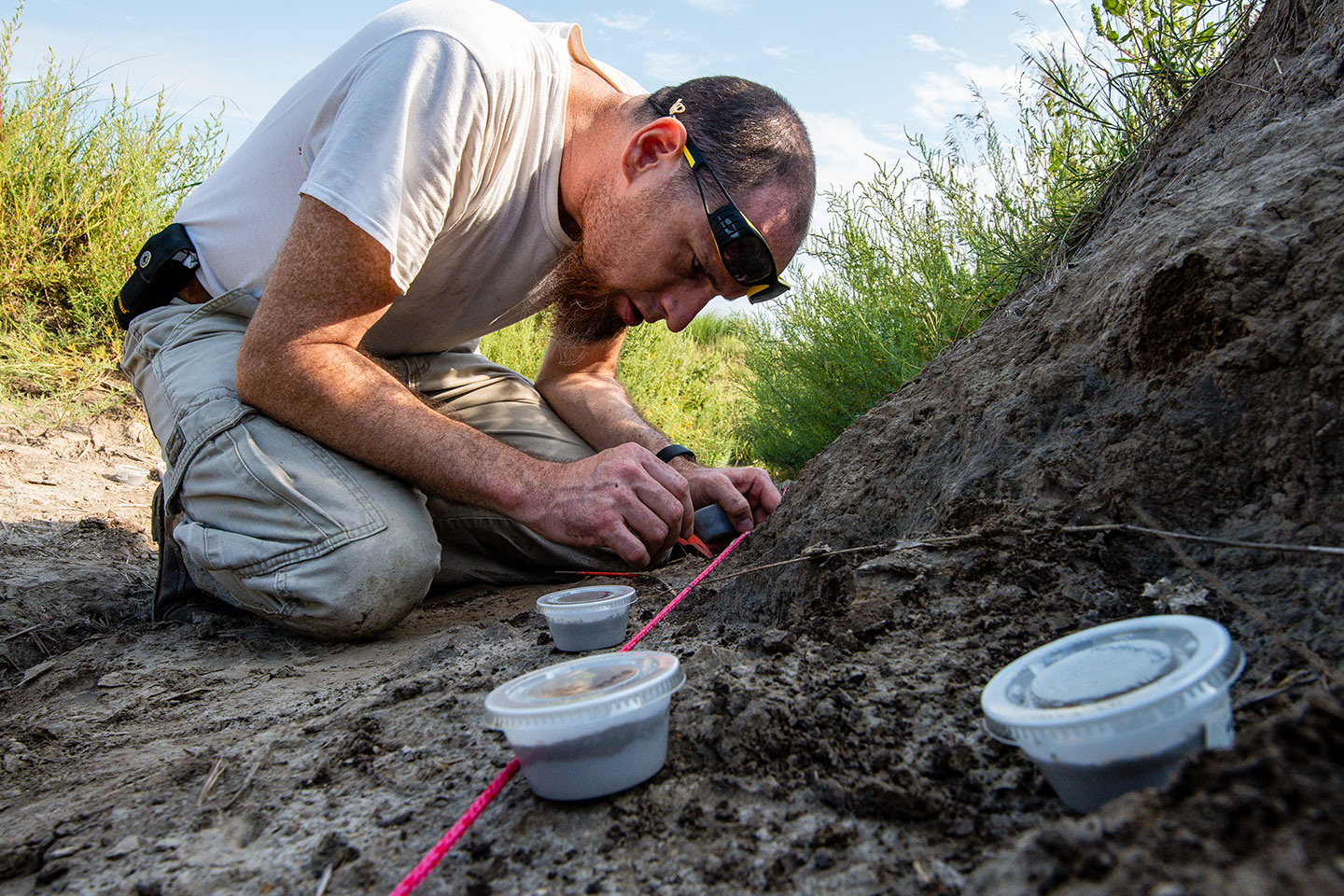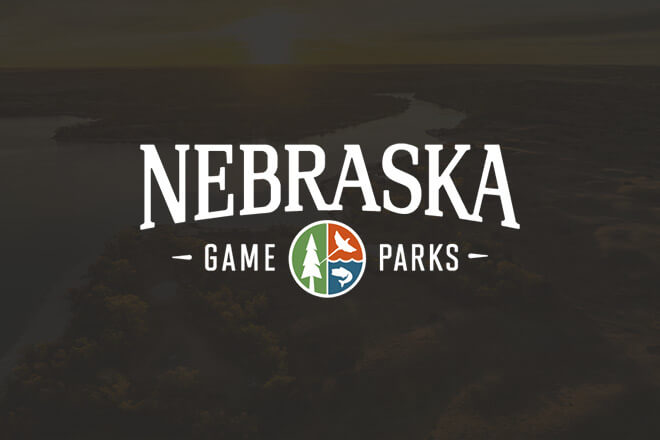Colorado butterfly plant
Status: Endangered

Colorado Butterfly Plant (Oenothera coloradensis) is a short-lived perennial plant that survives for two years. In its first year of life, it is a simple rosette or cluster of leaves. In year two, the plant shoots-up producing a tall stem (up to 60 cm tall) and flowers. Leaves are narrow and reach 11-12cm in length but get smaller as they move up the stem.
Flowers consist of four sepals and four larger pink to whitish-pink petals. Eight long stamens extend well beyond the petals. Flowers are open from late in the afternoon, through the night, and close in the morning. Flowers produce hard nut-like fruit which each contain 1-4 seeds.
The Colorado Butterfly Plant was officially added to the U.S. Threatened Species list in 2000. It is listed as Endangered on the Nebraska list.
Range
The Colorado Butterfly Plant is known to exist in a small area (1,700 acres) where the southwestern corner of the Nebraska panhandle, the southeastern corner of Wyoming and northcentral Colorado intersect. In Nebraska it is found in a small section of Kimball County.
Habitat
The Colorado Butterfly Plant is found in moist meadows and floodplains. It thrives in areas where groundwater nears the surface (sub-irrigated) and soils remain moist. Soils preference is mainly sand or gravel based and alluvial (water moved) in nature. Colorado Butterfly Plant is considered to be an early successional plant that thrives in previously flooded areas where little plant growth has taken place. It is found on level ground or areas with only a slight slope.
Reproduction
Colorado Butterfly Plant reproduces by seeds. It blooms from late June until late September or early October. Although this plant can self-pollinate, it usually relies on pollinators for fruit production. Moths are believed to be the main pollinators with pollination taking place a dusk or at night. Fruits begin to ripen in late July. Each plant can produce 140-375 fruits with each fruit containing 1-4 seeds.
Seed dispersal of the Colorado Butterfly Plant is not well understood, but it believed to take place primarily by flood waters moving seeds or by seeds sticking to muddy animals.
Population status
Only fourteen small populations of Colorado Butterfly Plant exist in the wild. These sites are often degraded leading to poor plant conditions. Within these 14 populations, it is estimated that only 3,000 individual plants remain.
Because this species has a relatively small range and extremely specific habitat requirements, it is unlikely that the species will survive without better land management.
Management and outlook
There are several threats to the survival of Colorado Butterfly Plant. Haying at the wrong time of year, non-selective herbicide spraying, land use changes and changes in hydrologic (water) conditions, and invasive species are all considered threats.
Landowners in the areas are encouraged to avoid haying until late summer until the plant has had a chance to produce and disperse seeds. Additionally, because overgrazing can be detrimental to the plant, a short-term grazing plan or grazing only during the winter is suggested in areas where Colorado Butterfly Plant is found.
Control of invasive or exotic species is also critical as Colorado Butterfly Plant cannot compete with many of these species. That said, care should be given when spraying invasive species due to the possibility of herbicides inadvertently affecting the Colorado Butterfly Plant.
Care should also be given when thinking about altering land use in areas where Colorado Butterfly Plant is found. Urban expansion and cultivation of land have both negatively affected the plant’s population.
Conservation help
Landowners can play an active role in the conservation of Colorado Butterfly Plant through late-season haying, winter-only grazing of pasture where the species is present and cautious control of invasive species.
Others can help the conservation of Colorado Butterfly Plant – and other Threatened and Endangered Species – by donating to conservation organizations dedicated to helping this and other Threatened or Endangered Species through research, land management and species conservation.
Additionally, taking time to learn about Threatened and Endangered Species as well as sharing that knowledge with others is critical to the development of citizens who care for the future of Threatened and Endangered Species.
Resources
Colorado Rare Plant Conservation Strategy. The Rare Plant Conservation Initiative. May 2009. Page 48.
NatureServe. 2017. NatureServe Explorer: An online encyclopedia of life [web application]. Version 7.1. NatureServe, Arlington, Virginia. Available http://explorer.natureserve.org. (Accessed: December 20, 2017).
Colorado Butterfly Plant. U.S. Department of Agriculture. June 2009.
https://efotg.sc.egov.usda.gov/references/public/NE/Colorado_Butterfly_Plant_description.pdf
Nebraska’s At-Risk Wildlife: Conserving Species and Their Habitats. Panella. Nebraska Natural Legacy Project. Pages 158-159.




